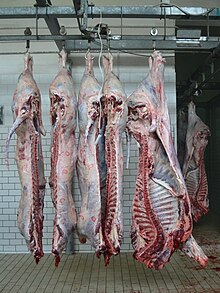
Back الاستخدامات البشرية للحيوانات Arabic Homa uzado de bestoj Esperanto Hewan dalam kehidupan manusia ID Dzīvnieku izmantošana cilvēku dzīvē Latvian/Lettish Hình tượng động vật trong văn hóa Vietnamese


Human uses of animals include both practical uses, such as the production of food and clothing, and symbolic uses, such as in art, literature, mythology, and religion. All of these are elements of culture, broadly understood. Animals used in these ways include fish, crustaceans, insects, molluscs, mammals and birds.
Economically, animals provide meat, whether farmed or hunted, and until the arrival of mechanised transport, terrestrial mammals provided a large part of the power used for work and transport. Animals serve as models in biological research, such as in genetics, and in drug testing.
Many species are kept as pets, the most popular being mammals, especially dogs and cats. These are often anthropomorphised.
Animals such as horses and deer are among the earliest subjects of art, being found in the Upper Paleolithic cave paintings such as at Lascaux. Major artists such as Albrecht Dürer, George Stubbs and Edwin Landseer are known for their portraits of animals. Animals further play a wide variety of roles in literature, film, mythology, and religion.